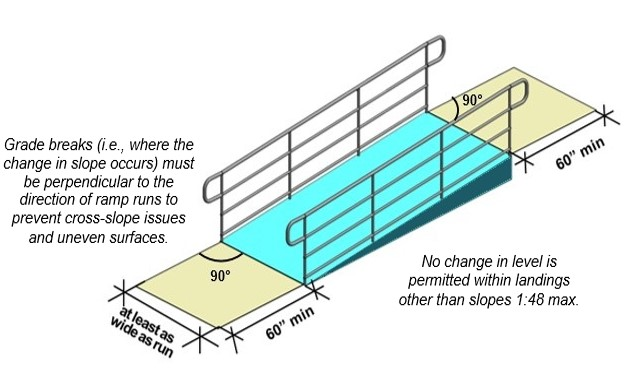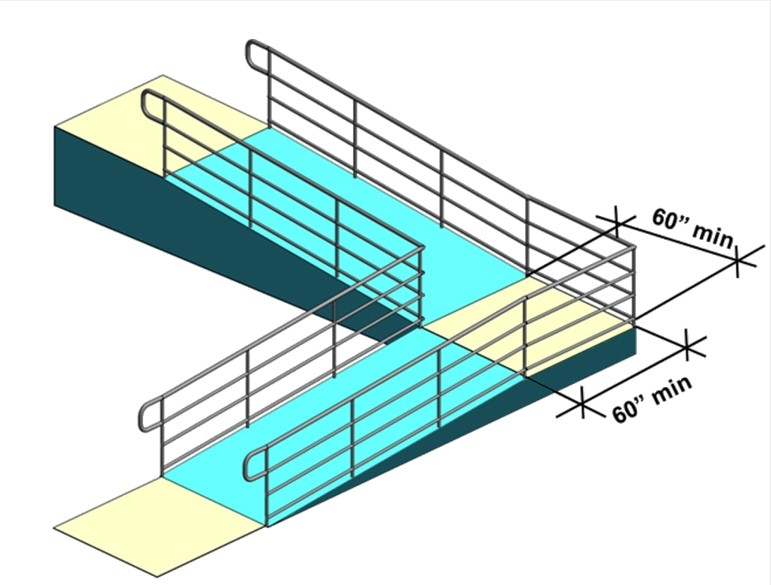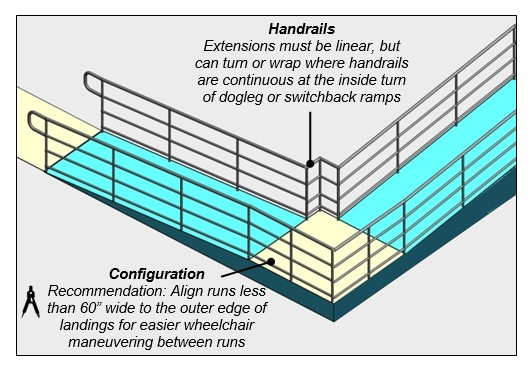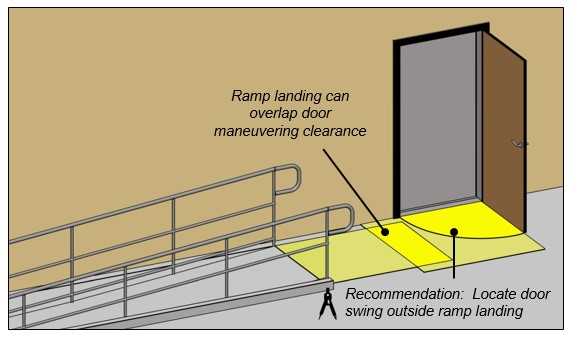Landings [§405.7]
Level landings are required at the top and bottom of each run. Changes in level greater than 1:48 are not permitted at landings. Landings must be designed to prevent the accumulation of water.
Intermediate landings between runs must be at least 60” wide clear and 60” long clear where ramps change direction (any change from linear). Handrails, edge protection, vertical posts and other elements cannot obstruct or overlap the minimum 60” by 60” clearance. The 12” minimum handrail extensions required at the top and bottom of ramp runs must be in the same direction of the run, but they can turn or wrap where handrails are continuous at the inside turn of dogleg or switchback ramps.
Intermediate Landings Where Ramps Change Direction
Doorways at Landings [§405.7.5]
Required door maneuvering clearances can overlap ramp landings (it is advisable to locate the swing of doors outside ramp landings for greater safety).
Doorways at Ramp Landings





User Comments/Questions
Add Comment/Question